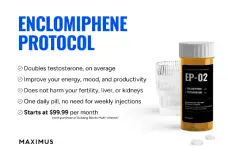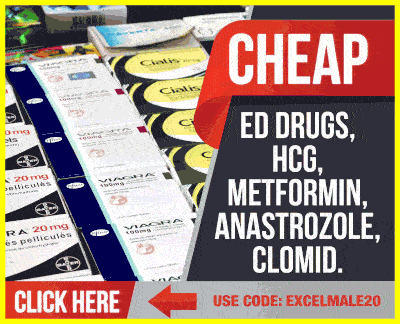madman
Super Moderator
This ones going out to all those bros stinkin' up those so called HRT/men's health forums!
Stop f**king blaming high estradiol!
Critical points here!
* The four established pillars of acne pathogenesis are sebum production, follicular hyperkeratinization, Cutibacterium acne (C. acnes) colonization and proliferation of pro-inflammatory strains, and cascades of inflammation.4 Yet, as Del Rosso explained,the pivotal role that androgen hormones play in acne pathogenesis has previously been overlooked.
* We now know that the skin itself is an endocrine organ, capable of producing androgens, and that these hormones are implicated early on in the clinical cascade of acne pathogenesis.5 Notably, androgens stimulate sebum production by sebocytes within sebaceous glands in the skin, which creates a highly favorable microenvironment for growth of C. acnes bacteria within the pilosebaceous follicle.6 “If there are no androgens, there’s no sebum, and if there’s no sebum, there’s no acne; and that’s practically universally true,” DelRosso remarked. Androgens also stimulate cytokines and other inflammatory pathways, leading to downstream effects that further promote lesion development (Figure 2).5
* Clascoterone 1% cream is a novel topical androgen receptor inhibitor approved for the treatment of acne vulgaris in patients 12 years of age and older.7 It directly targets and inhibits androgens in the skin by competing with androgens, primarily dihydrotestosterone (DHT), for binding to the androgen receptor within the cytoplasm of sebocytes, thereby inhibiting sebum production and reducing inflammatory cytokines.5-7
Figure 2: Acne vulgaris pathogenesis clinical cascade.

Meeting Summary
In this continuing medical education session at the 2024 Fall Clinical Dermatology Conference, James Q Del Rosso, Adjunct Clinical Professor of Dermatology at Touro University Nevada, Henderson, USA, and Karan Lal, Director of Pediatric Dermatology at Affiliated Dermatology, Scottsdale, USA, reviewed recent additions to the therapeutic armamentarium for acne and considered how to integrate new topical therapies into clinical practice in order to optimize outcomes for patients. Notable recent additions to dermatologists’ acne toolkit include newer dual and triple combination therapies, as well as agents with novel mechanisms, such as the androgen-receptor inhibitor clascoterone. Given the wide variety of topical therapies now available, Lal emphasized the importanceof joint decision-making and individualized acne management that meets patients’needs, as well as targeting underlying disease pathophysiology.
* Patient-Centered Care
* The Key Role of Topical Therapies
* Targeting Androgens
The four established pillars of acne pathogenesis are sebum production, follicular hyperkeratinization, Cutibacterium acne (C. acnes) colonization and proliferation of pro-inflammatory strains, and cascades of inflammation.4 Yet, as Del Rosso explained,the pivotal role that androgen hormones play in acne pathogenesis has previously been overlooked. We now know that the skin itselfi s an endocrine organ, capable of producing androgens, and that these hormones are implicated early on in the clinical cascade of acne pathogenesis.5 Notably, androgens stimulate sebum production by sebocytes within sebaceous glands in the skin, which creates a highly favorable microenvironment for growth of C. acnes bacteria within the pilosebaceous follicle.6 “If there are no androgens, there’s no sebum, and if there’s no sebum, there’s no acne; and that’s practically universally true,” DelRosso remarked. Androgens also stimulate cytokines and other inflammatory pathways, leading to downstream effects that further promote lesion development (Figure 2).5
The skin has, therefore, emerged as a primary target for androgen inhibition and sebum modulation in acne management.5,6
Clascoterone 1% cream is a novel topical androgen receptor inhibitor approved for the treatment of acne vulgaris in patients 12 years of age and older.7 It directly targets and inhibits androgens in the skin by competing with androgens, primarily dihydrotestosterone (DHT), for binding to the androgen receptor within the cytoplasm of sebocytes, thereby inhibiting sebum production and reducing inflammatory cytokines.5-7 Clascoterone demonstrated favorable efficacy and safety in two randomized, vehicle-controlled, Phase III trials involving 1,440 male and female acne patients.8 At week 12, treatment success rates in the two trials ranged from 18.4–20.3% with clascoterone, and were significantly higher than with vehicle (6.5–9.0%).8 Treatment success was defined as an Investigator’s Global Assessment (IGA)score of 0 or 1 (clear or almost clear) and a ≥2-grade improvement from baseline and absolute change from baseline in non-inflammatory and inflammatory lesion counts. Del Rosso postulated that the cadence of this clinical response, and the onset of visible treatment effects, may be accelerated if topical androgen receptor inhibition with clascoterone is used as part of topical combination therapy, which is the usual standard of care with topical therapy for acne. Data from a 1-year, open-label extension study also support the longer term use of clascoterone, with the potential to treat acne lesions on the trunk as well as the face.9 In this study, the longer patients were treated with topical clascoterone for acne, the better their clinical response in achieving clear or almost clear (IGA 0 or 1 rating) on both the face and on the trunk, Del Rosso pointed out (Figure 3).
Regarding the potential combination of clascoterone with other topical agents, Del Rosso emphasized tolerability and skin barrier effects as key considerations, alongside efficacy. Importantly, clascoterone1% cream applied twice daily was shown not to impair the epidermal permeability barrier in a split-face study involving 49 patients. In this study, no significant increases in transepidermal water loss (TEWL) were seen, and clascoterone actually increased corneometry readings, which measure the magnitude of skin moisture levels, by 13%after 2 weeks of application, indicating an improvement in skin hydration.11
* Combination Regimens
* Clinical Practice Perspectives
Conclusion
In conclusion, Del Rosso reiterated that acne management warrants individualized therapy, which also integrates skincare and other patient-specific factors. Comprehensive topical therapy, which is able to address the four major pathophysiologic pillars of acne, is now available, and optimal selection of therapy may also be correlated with acne lesion types. Notable treatment advances and recent additions to the topical acne tool kit include the novel androgen receptor inhibitor clascoterone and the first fixed-dose triple combination product. Ultimately, patients and dermatologists should reach a joint decision about acne treatment after discussion of the pros and cons of available therapies, he concluded.
Stop f**king blaming high estradiol!
Critical points here!
* The four established pillars of acne pathogenesis are sebum production, follicular hyperkeratinization, Cutibacterium acne (C. acnes) colonization and proliferation of pro-inflammatory strains, and cascades of inflammation.4 Yet, as Del Rosso explained,the pivotal role that androgen hormones play in acne pathogenesis has previously been overlooked.
* We now know that the skin itself is an endocrine organ, capable of producing androgens, and that these hormones are implicated early on in the clinical cascade of acne pathogenesis.5 Notably, androgens stimulate sebum production by sebocytes within sebaceous glands in the skin, which creates a highly favorable microenvironment for growth of C. acnes bacteria within the pilosebaceous follicle.6 “If there are no androgens, there’s no sebum, and if there’s no sebum, there’s no acne; and that’s practically universally true,” DelRosso remarked. Androgens also stimulate cytokines and other inflammatory pathways, leading to downstream effects that further promote lesion development (Figure 2).5
* Clascoterone 1% cream is a novel topical androgen receptor inhibitor approved for the treatment of acne vulgaris in patients 12 years of age and older.7 It directly targets and inhibits androgens in the skin by competing with androgens, primarily dihydrotestosterone (DHT), for binding to the androgen receptor within the cytoplasm of sebocytes, thereby inhibiting sebum production and reducing inflammatory cytokines.5-7
Figure 2: Acne vulgaris pathogenesis clinical cascade.
Meeting Summary
In this continuing medical education session at the 2024 Fall Clinical Dermatology Conference, James Q Del Rosso, Adjunct Clinical Professor of Dermatology at Touro University Nevada, Henderson, USA, and Karan Lal, Director of Pediatric Dermatology at Affiliated Dermatology, Scottsdale, USA, reviewed recent additions to the therapeutic armamentarium for acne and considered how to integrate new topical therapies into clinical practice in order to optimize outcomes for patients. Notable recent additions to dermatologists’ acne toolkit include newer dual and triple combination therapies, as well as agents with novel mechanisms, such as the androgen-receptor inhibitor clascoterone. Given the wide variety of topical therapies now available, Lal emphasized the importanceof joint decision-making and individualized acne management that meets patients’needs, as well as targeting underlying disease pathophysiology.
* Patient-Centered Care
* The Key Role of Topical Therapies
* Targeting Androgens
The four established pillars of acne pathogenesis are sebum production, follicular hyperkeratinization, Cutibacterium acne (C. acnes) colonization and proliferation of pro-inflammatory strains, and cascades of inflammation.4 Yet, as Del Rosso explained,the pivotal role that androgen hormones play in acne pathogenesis has previously been overlooked. We now know that the skin itselfi s an endocrine organ, capable of producing androgens, and that these hormones are implicated early on in the clinical cascade of acne pathogenesis.5 Notably, androgens stimulate sebum production by sebocytes within sebaceous glands in the skin, which creates a highly favorable microenvironment for growth of C. acnes bacteria within the pilosebaceous follicle.6 “If there are no androgens, there’s no sebum, and if there’s no sebum, there’s no acne; and that’s practically universally true,” DelRosso remarked. Androgens also stimulate cytokines and other inflammatory pathways, leading to downstream effects that further promote lesion development (Figure 2).5
The skin has, therefore, emerged as a primary target for androgen inhibition and sebum modulation in acne management.5,6
Clascoterone 1% cream is a novel topical androgen receptor inhibitor approved for the treatment of acne vulgaris in patients 12 years of age and older.7 It directly targets and inhibits androgens in the skin by competing with androgens, primarily dihydrotestosterone (DHT), for binding to the androgen receptor within the cytoplasm of sebocytes, thereby inhibiting sebum production and reducing inflammatory cytokines.5-7 Clascoterone demonstrated favorable efficacy and safety in two randomized, vehicle-controlled, Phase III trials involving 1,440 male and female acne patients.8 At week 12, treatment success rates in the two trials ranged from 18.4–20.3% with clascoterone, and were significantly higher than with vehicle (6.5–9.0%).8 Treatment success was defined as an Investigator’s Global Assessment (IGA)score of 0 or 1 (clear or almost clear) and a ≥2-grade improvement from baseline and absolute change from baseline in non-inflammatory and inflammatory lesion counts. Del Rosso postulated that the cadence of this clinical response, and the onset of visible treatment effects, may be accelerated if topical androgen receptor inhibition with clascoterone is used as part of topical combination therapy, which is the usual standard of care with topical therapy for acne. Data from a 1-year, open-label extension study also support the longer term use of clascoterone, with the potential to treat acne lesions on the trunk as well as the face.9 In this study, the longer patients were treated with topical clascoterone for acne, the better their clinical response in achieving clear or almost clear (IGA 0 or 1 rating) on both the face and on the trunk, Del Rosso pointed out (Figure 3).
Regarding the potential combination of clascoterone with other topical agents, Del Rosso emphasized tolerability and skin barrier effects as key considerations, alongside efficacy. Importantly, clascoterone1% cream applied twice daily was shown not to impair the epidermal permeability barrier in a split-face study involving 49 patients. In this study, no significant increases in transepidermal water loss (TEWL) were seen, and clascoterone actually increased corneometry readings, which measure the magnitude of skin moisture levels, by 13%after 2 weeks of application, indicating an improvement in skin hydration.11
* Combination Regimens
* Clinical Practice Perspectives
Conclusion
In conclusion, Del Rosso reiterated that acne management warrants individualized therapy, which also integrates skincare and other patient-specific factors. Comprehensive topical therapy, which is able to address the four major pathophysiologic pillars of acne, is now available, and optimal selection of therapy may also be correlated with acne lesion types. Notable treatment advances and recent additions to the topical acne tool kit include the novel androgen receptor inhibitor clascoterone and the first fixed-dose triple combination product. Ultimately, patients and dermatologists should reach a joint decision about acne treatment after discussion of the pros and cons of available therapies, he concluded.













